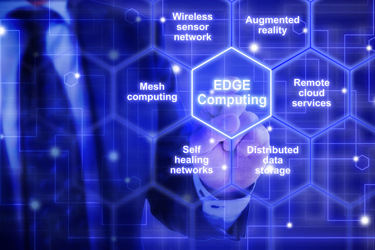How MSPs Can Meet The Increasing Demand For Edge Computing
By Larry Hann, Director of Channel Software & Digital Services, Schneider Electric

By 2023, more than half of new enterprise IT infrastructure will be at the edge – five times more than it is today. The use of edge infrastructure is exploding. For example, contactless pickup in the retail sector relies on low latency data transfers in hundreds of locations to ensure accurate inventory communication between the mobile app and the store’s inventory system. By investing heavily in edge computing networks, retailers created seamless omni-channel experiences with real-time processing and analytics power during the pandemic.
As edge computing assets become increasingly crucial for business operations across all sectors, the managed service providers (MSPs) that embrace this trend will be the ones to capitalize on this new wave of technology most successfully. Here are four ways that MSPs can step up to meet the increasing demand for edge computing.
- Use A Plug-And-Play Option Within Existing IoT Infrastructure
According to Gartner, nearly two-thirds (61%) of enterprises now show a high level of IoT maturity. However, the costs associated with sending the large volume of data collected within IoT applications make local processing much more practical. A plug and play option that wraps around the entire edge and existing IoT infrastructure can simplify device management and boost operational efficiency. Next-gen solutions that have interoperability with third-party and proprietary technologies help deliver deep insights across the edge environment.
- Repurpose Rather Than Create From Scratch
Edge data centers can be located almost anywhere. Repurpose existing facilities to accommodate an edge data center by using purpose-built hardware and software to add critical power services at the edge. MSPs must also ensure that the technology has reliability and remote, standardized deployment and management regardless of the type of environment. Intelligent analytics applications also can do predictive, proactive maintenance to reduce the risk of downtime. As businesses grow and open new locations, MSPs can continue to meet their needs using this hardware and software.
- Bring On Strategic Partners
Due to the complexities of the edge and its critical IT power needs, turning to a partner for support can be extremely helpful. According to the International Data Corporation (IDC), more than 60% of end user organizations want outside help in managing their edge deployments. Strategic partners can help with this by building a Managed Power Services practice to help their customers and grow their business. With the right services, tools, and partnerships, MSPs can use this high-tech infrastructure to maximize their profitability and customer service.
- Cultivate Cross-Sector Knowledge
Although some vertical industries are early adopters of edge technology, any company can apply edge computing to increase efficiency and develop new revenue streams. Providers should cultivate extensive knowledge across sectors on how edge computing can improve efficiency and provide actionable insights. For example, banks investing in edge computing to avoid latency in data transmissions will need different functionality than a hospital with next-generation robotics that assists doctors in performing surgery.
As the demand for data and accessible information continues to become more critical to businesses, IT professionals are facing challenges and opportunities in their businesses and technology solutions. Investing the time to deeply understand industry needs can help ensure that the right edge architecture is recommended and deployed. MSPs that figure out how to support the rapidly increasing demand for edge computing will find themselves with a competitive advantage now and in the years to come.
About The Author
Larry Hann is Director of Channel Software & Digital Services at Schneider Electric.
